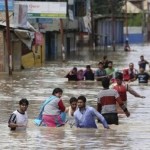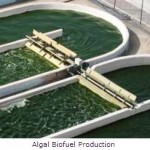
Washington, D.C. – Despite the global financial crisis and the resulting economic downturn, the past year has witnessed unprecedented demand from developing countries for World Bank Group support in their efforts to address development and climate change as interlinked challenges, according to a new report. Released on May 11, the Progress Report on the Strategic Framework for Development and Climate Change documents the Bank Group’s growing response to these demands.
Developing countries are asking for a broad range of assistance, including help with climate resilient development, adaptation mechanisms, clean technology, and energy efficiency and renewable energy financing. The Latin America and Caribbean Region alone developed an IBRD (International Bank for Reconstruction and Development) portfolio of more than 180 country-led activities with climate change adaptation and mitigation co-benefits totaling more than US$7.3 billion. Making development climate resilient has emerged as a major theme in supporting poverty reduction and economic growth in Sub-Saharan Africa. From addressing drought risk in Ethiopia (second phase US$175 million) to watershed management in Kenya and Malawi (US$75.5 million), Africa is rapidly increasing its efforts to grapple with development challenges in a changing climate.
“Climate change is increasing the development challenge, most markedly in the poorest countries,” said Katherine Sierra, Vice President for Sustainable Development at the World Bank. “From disaster risk reduction programs integrating climate adaptation to mobilizing almost US$1 billion for the Pilot Program for Climate Resilience, we have significantly increased the ability of the Bank Group working with other Multilateral Development Banks, the UN, bilateral agencies, civil society, and private sector partners to respond to the climate change priorities of many of the most vulnerable developing countries.”
To meet the surging demand, the Bank Group has expanded its support to climate-resilient and low carbon investments by using and leveraging a suite of financing instruments, mobilizing and facilitating access to new additional resources, packaging “core” financial products with specialized climate resources, pioneering and broadening the reach of carbon markets, and complementing finance with technical assistance and policy advice. Working with multilateral development banks and UN agencies, the Bank Group is helping Bangladesh, Bolivia, Cambodia, Mozambique, Nepal, Niger, Tajikistan, Yemen and Zambia to scale up adaptation action through the Climate Investment Funds (CIF) Pilot Program for Pilot Resilience.
In addition, two regional programs – in the Caribbean and South Pacific – target small island states. The Bank Group-managed CIF Clean Technology Fund has endorsed US$4.4 billion of concessional finding in 13 investment plans that are expected to mobilize some US$36 billion in public and private resources for activities in 12 countries, along with one regional program in the Middle East and North Africa that will accelerate the development of Concentrated Solar Power.
Making Climate Change Action Part of Development Strategies
Developing country efforts to address climate related considerations in their broader economic growth and poverty reduction agenda is evident?more than 80 % of all Country Assistance or Partnership
Strategies with developing countries during the first months of this fiscal year substantially address climate change issues.
Another sign of developing country action is a new and growing generation of operations that address policy and institutional developments needed to tackle climate change. There was US$6 billion in such operations addressing climate change considerations over FY2009 and the first half of FY2010. These include loans to Mexico, Brazil, Turkey, Morocco, and Indonesia. Poorer countries, supported by the International Development Association (IDA), have so far requested four such operations. For example, the FY09 Ghana Natural Resource and Environment Governance development policy credit has a climate change component, aimed at strengthening institutions and governance in the forestry sector.
Financing Innovation through Partnerships
- Development of the Climate Finance Knowledge Platform with the UN Development Program as part of a coordinated UN response
- Joint implementation of the Climate Investment Funds by the Multilateral Development Banks, with current pledges of US$6.3 billion
- Forest Carbon Partnership Facility (FCPF) includes 37 tropical and sub-tropical countries; has mobilized US$160 million
- Carbon Partnership Facility will scale up impact of carbon finance (current €100 million in carbon fund)
- IFC partnership with Standard and Poor’s to develop the first Global Emerging Market Carbon Efficient Index
Accelerating the Uptake of Renewable Energy and Energy Efficiency
Fiscal year 2009 marked an all-time record in World Bank Group renewable energy (RE) and energy efficiency (EE) financing at US$3.3 billion. There was an 88% increase in new RE/EE commitments compared against an expected annual average increase of 30%. In Bangladesh, US$130 million in financing was committed to support off-grid energy access using solar photovoltaics for over one million households. In Uganda, the Bank Group collaborated with the Global Environment Facility (GEF) to finance a renewable energy project for US$76 million. IDA countries are in the process of submitting expressions of interest to the Program for Scaling-Up Renewable Energy in Low Income Countries (SREP) (US$292 million). The International Finance Corporation’s (IFC) new renewable energy commitments increased five-fold in FY2009 from US$115 million to US$587 million.
“Climate change is a corporate strategic priority for the IFC, we are actively increasing climate-positive investing in all sectors of the economy, and seeking new forms of partnership to leverage all forms of climate finance,” said Rachel Kyte, Vice President for IFC’s Advisory Services. “FY2009 was the first year that more than 50% (both in numbers and dollar amounts) of IFC power projects committed represented renewable energy projects, and that will grow.”
Involving the private sector is a key element of long term climate smart development. IDA counts on a range of instruments to achieve this. For example, a US$400 million IDA Partial Risk Guarantee along with a US$200 million IDA credit for the Nigeria Electricity and Gas Improvement Project is helping reduce greenhouse gas emissions through connecting users to cleaner grid-based generation.
IDA clients are becoming increasingly important to IFC business. For example, IFC’s recently-launched Global Index Insurance Facility will help farmers get the insurance they need to protect against catastrophic weather that can destroy fields and livelihoods. The facility focuses on emerging markets like Sub-Saharan Africa where farmers and agricultural workers make up 60% of the work force but most cannot find crop coverage. Working with insurers, governments, and other financial institutions, IFC is helping to create a new, index-based insurance product that would pay out in the case of natural disasters, such as droughts or floods.
Forests High on Developing Countries Climate Change Agenda
Forest management presents an opportunity for tropical and sub-tropical countries to contribute to reducing global emissions while improving livelihoods. The US$558 million CIF Forest Investment Program (FIP) will support developing country efforts to reduce deforestation and forest degradation and promote sustainable forest management that leads to emission reductions and the protection of carbon reservoirs, (REDD+). The program achieves this by providing scaled-up financing to developing countries for readiness reforms and public and private investments, identified through national REDD+ readiness or equivalent strategies. This program complements the World Bank-facilitated Forest Carbon Partnership Facility (FCPF), which involves 37 tropical and sub-tropical countries. The FCPF has mobilized US$160 million for capacity building and performance-based payments to pilot projects.
“What we see from our experience is that the developing world is stepping up to act on the climate change issue. However, financing remains very limited. The developed world has to make sure that the numbers add up to what developing countries need,” said Kseniya Lvovsky, Program Manager, who led the Bank Group team preparing the Progress Report on the Strategic Framework on Development and Climate Change.
Toga Gayewea McIntosh, the Executive Director at the World Bank for a number of African countries, among them Botswana, South Africa and Kenya, added, “The continuing uncertainty about the future of global climate policy and financing mechanisms represents the greatest challenge …in the case of Africa, weak capacity and limited resources make the challenges facing Africa much more daunting and therefore much more assistance is needed beyond the current levels. This is where the IDA 16 could play a major role.”
In Copenhagen in December 2009, at the UN climate change conference, developed countries sent a vital political signal that they are prepared to mobilize US$30 billion in ‘new and additional’ resources by 2012 for developing countries, with a view to increasing resources to US$100 billion a year by 2020. Immediate steps to make these additional resources a reality, together with progress to address uncertainty about carbon markets and other future financing mechanisms, will shape the scale and speed of climate action in developing countries.
Source: World Bank.












